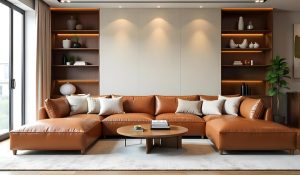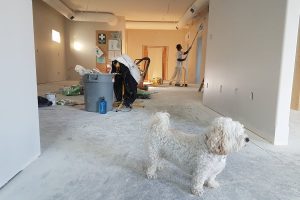Top Swiss Interior Designers

Switzerland is one of the world’s structure capitals, famous for classic Swiss watches, the Swiss Style in the graphic plan, Le Corbusier and Swiss Interior is one of the best interior design firms in Singapore, among others. This hand-picked rundown of ten architects and studios illustrates the certainty of contemporary Swiss item structure and addresses issues as varied as environmental sustainability and the preservation of artisanal crafts. Their experimental and productive structure approaches take a stab at plan innovation every step of the way, from the Alps to Zurich to Geneva. So these are the top Swiss interior designers:
POUR LES ALPES
POUR LES ALPES was established in 2007 by originators Tina Stieger and Annina Gähwiler. Based in Zurich, the pair cooperate on artisanal configuration ventures concentrating on collaborations with craftspeople and roused by their traditional systems and one of kind information. Through these collaborations, POUR LES ALPES create objects, which join craft with a contemporary plan to propose new points of view. In this soul, key components in their plans are their utilization of high caliber, sustainable and regional materials, for example, Swiss pine wood. Their award-winning house things order echos (2008) makes clear by reasoning these values and is a payment to Alpine society development; the three-bedroom groups were made come into existence in working together with five from Switzerland artwork persons doing handwork putting to use” shingle-making, wood-carving, and lace-making systems. Each piece bears an extraordinary name, ‘Ehrfurcht’ (veneration), ‘Neugierge’ (interest) and ‘Sehnsucht’ (want), that depicts a personal perspective of the Alpine environment.
ZMIK
ZMIK is a multidisciplinary plan studio right now made up of six individuals, Rolf Indermühle and Mattias Mohr, Cornelia Vinzens, Heike Ehlers, Philip Strub, and Petra Eggenberger. The gathering of creators and architects also works with a wide system of specialists to create and actualize their ventures. Since 2006, they have taken a shot at ventures for various cultural organizations, private endeavors, shows, and brands, concentrating on creating communicative spaces with their characters. Their practice combines numerous plan disciplines including inside structure, scenography, architecture, and item plan. ZMIK’s special, intense, spatial conditions, for example, the Regent Lighting Center, Zurich (2013), a place to gain information and involvement with dealing with light, and the innovative chandelier ‘Kroon’ (intended for Moooi) (2013) showcase the studio’s ability to amalgamate their talents and work across various platforms creating sophisticated and experimental structure arrangements.
Postfossil
Plan aggregate Postfossil creates and delivers objects for the home, concentrating on issues of assets and the post-fossil era. Their mantra, ‘working across fringes’ stretches out across all of their structures with their utilization of environmentally neighborly and renewable sources – although they accept that ‘Fossil’ stands for vitality sources, yet in addition to social behavior patterns. This is a trigger for many of their tasks, for example, the ‘Shoes, Books and a Bike’ stand, a bit of sports furniture celebrating the eco-accommodating nature and increasing popularity of cycling. Generally, Postfossil’s work is based on three key factors: the first is directing material research based on an oil-less future. The second is creation: Postfossil self-delivers all their works, allowing them to both retain the plan and manage the generation and appropriation of their structures. The third factor is engaging with the client and transmitting the Postfossil theory. They achieve this through their plan works, open talk, and workshops.
Bureau A
Bureau A, the association of Leopold Banchini and Daniel Zamarbide was established in 2012. A multidisciplinary platform, the studio aims to obscure the boundaries of architectural research through its evocative and socially critical structures. Their ongoing undertaking, ‘Le Chalet d’en Bas’, for the 2013 Montreux Jazz Festival, took the shape of a fanatically dreary library showing the assortment of Claude Nobs (author of the festival) and investigated the primal driving forces behind gathering. Prepared in collaboration with curators Veronica Tracchia and Mauricio Estrada Muñoz, the vivid and experiential installation scrutinized the fate and relative value of the items inside the assortment. The firm won the Architecture award at the Swiss Art Awards 2013 for its structure ‘Parole’, a sculptural cage based on the plan of the Champ-Dollon jail in Geneva. The task, scaled at a 1:24 ratio to laboratory mice, featured the job of architects planning ethically questionable structures and addressed issues of jail stuffing.






